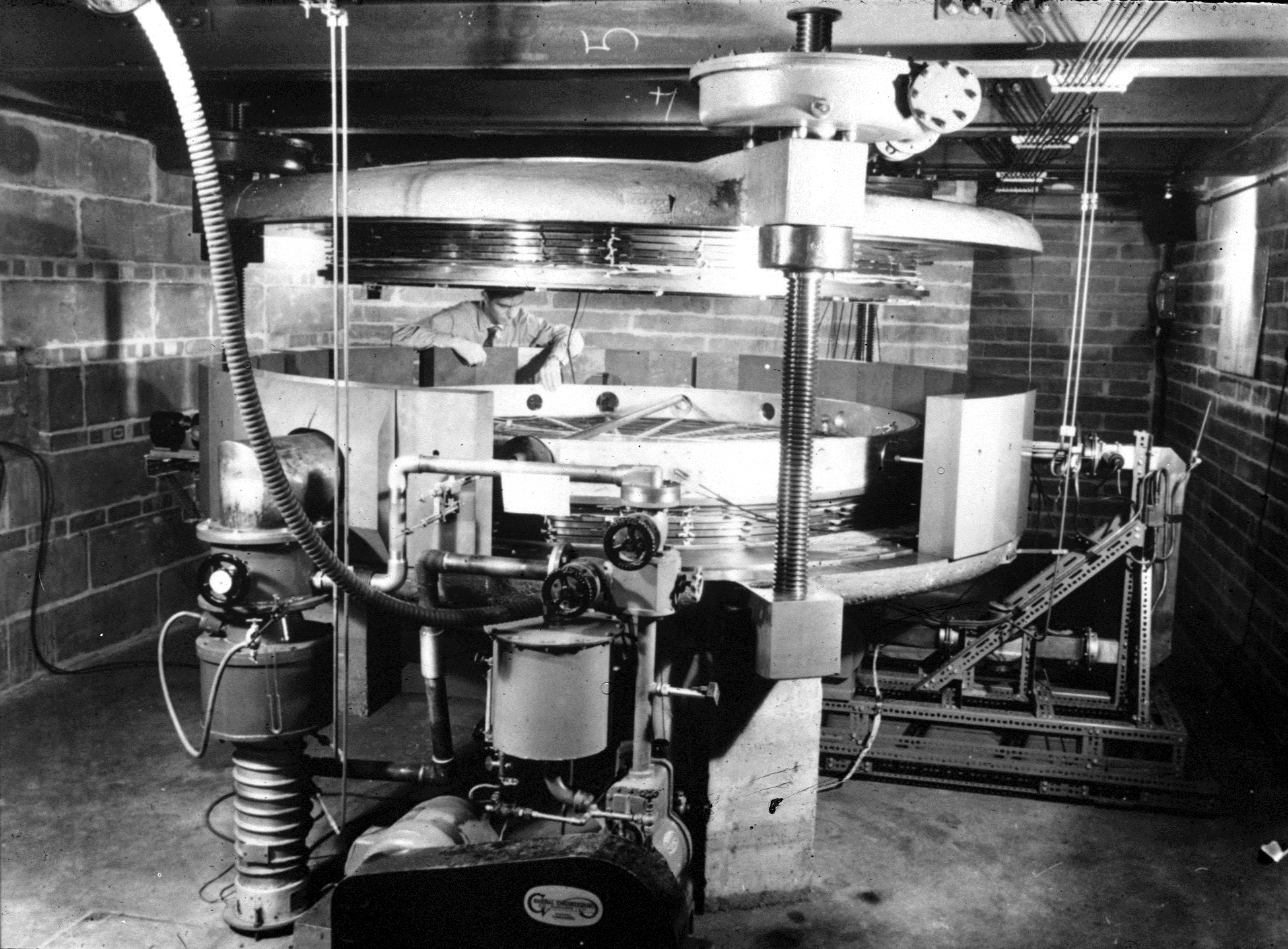A History of Early High Energy Physics Research at UCL
Jim Grozier
The Microtrons

Two electron accelerators or microtrons were built at UCL in the 1950s.These were low-energy devices and hence do not really count as "HEP", although clearly there were overlaps. The first microtron provided electrons at 4.5 MeV and was used for electron scattering studies by Cyril Henderson, Dick Jennings and Franz Heymann.
Franz and Dick investigated the multiple scattering of 4.5 MeV electrons by aluminium, copper, molybdenum, silver and platinum foils; the results were in good agreement with theory. Later M. R. Bhiday collaborated with Jennings in measurements of the radiative correction for scattering of 4.5 MeV electrons at different angles from high and low Z foils, with results again in reasonable agreement with theory.
Following the successful operation of this microtron, Heymann and Jennings were joined by two PhD students, David Aitken and Peter Kalmus, in the development of a larger machine, based on a 20 ton magnet of pole diameter 7.5 ft. It was brought into operation in the Summer of 1958 at an energy of 29 MeV. Kalmus had already been at UCL since 1951 as an undergraduate, and recalls that his interview with Heymann and Jennings was somewhat informal, consisting of only one question: "Do you smoke?" (the correct answer to which, at that time, was "Yes").[1]
The plan was to attempt to measure nuclear sizes by electron scattering; at 29 MeV one should have been able to observe a small deviation from a point-like nucleus, but the UCL group was overtaken by Robert Hofstadter's group at Stanford University in the USA, who were working at energies an order of magnitude higher. (Hofstadter eventually got the Nobel Prize for this work). Kalmus describes the UCL machines as "home-built", and less professional than the one at Stanford; nevertheless, its construction proved a useful learning exercise.
Other experiments done with the 29 MeV mictrotron included the measurement of Bremsstrahlung spectra by Jennings, J. F. Hague and Roy Rand, and energy loss distributions for 28 MeV electrons after passage through tungsten foils by Jennings and G. R. Davies. In 1957, Heymann went to work at CERN; Kalmus did three years as a postdoc with Jennings, then moved to the Argonne National Laboratory in the USA. He noted, as did his brother George a few years later, that the atmosphere in American laboratories at that time was less bureaucratic than in the UK, and there was a positive, "can-do" attitude, with better facilities and more money; physicists there were highly regarded following the success of the atomic bomb project.
The microtron programme finished in 1963.
For further details of the Microtrons click here.
